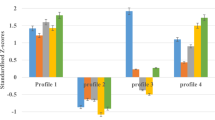Abstract
This paper is a report of the analysis of statements by 869 students and their 21 lecturers in 12 courses in 5 Faculties in the Queensland University of Technology (QUT). The students and lecturers were asked to write a page about learning. The objectives were to collect data to devise a taxonomy of levels of knowledge of learning held by tertiary students and lecturers and to use this to describe student knowledge to lecturers as a basis for planning for teaching. The statements were categorised, using the SOLO Taxonomy as a model (c.f., Biggs and Collis 1982, 1989), by two trained researchers and checked by the author and a consultant. The majority of responses for both students and lecturers were multistructural. A MANOVA for SOLO levels by deep, surface and achieving motives and strategies showed that as SOLO levels increased surface motives declined and deep motives and strategies assumed more importance. The key concepts in learning identified by a random sample of 100 students were further analysed and described for each SOLO level. A SOLO type model of levels of knowledge of learning is proposed, based on the structure of the responses.
Similar content being viewed by others
References
Bereiter, C. (1990). ‘Aspects of an educational learning theory’,Review of Educational Research 60 603–624.
Biggs, J.B. (1987).The Study Process Questionnaire (SPQ) Users' Manual. Hawthorn, Victoria: ACER.
Biggs, J.B. (ed.) (1991).Teaching for Learning: the View from Cognitive Psychology. Hawthorn, Victoria: ACER.
Biggs, J.B. (1992). ‘Modes of learning, forms of knowing, and ways of schooling’, in Demetriou, A., Shayer, M., and Efklides, A. (eds.),Neo-Piagetian Theories of Cognitive Development. London: Routledge.
Biggs, J.B. (1993). ‘What do inventories of learning processes really measure? A review and clarification’,British Journal of Educational Psychology 63 3–19.
Biggs, J.B., and Collis, K.F. (1982).Evaluating the Quality of Learning: The SOLO Taxonomy New York: Academic Press.
Biggs, J.B., and Collis, K.F. (1989). ‘Towards a model of school-based curriculum development and assessment: using the SOLO Taxonomy’,Australian Journal of Education, 33, 149–161.
Boulton-Lewis, G.M. (1992). ‘The SOLO Taxonomy and levels of knowledge of learning’. Paper published in the proceedings of the annual conference of the Higher Education Research and Development Society of Australasia, 7–10 July 1992. Monash University College Gippsland, Churchill, Australia.
Dart, B.C., and Clarke, J.A. (1991). ‘Helping students become better learners: a case study in teacher education’,Higher Education 22, 317–335.
Marton, F., Saljo, R. (1976). ‘On qualitative differences in learning. I — outcome and process’,British Journal of Educational Psychology 46, 4–11.
Marton, F., and Saljo, R. (1984). ‘Approaches to learning’, in Marton, F., Hounsell, D., and Entwistle, N.J. (eds.),The Experience of Learning. Edinburgh Scottish Academic Press.
Marton, F., Dall'Alba, G., and Beaty, E. (1993). ‘Conceptions of learning’,International Journal of Educational Research 19(3), 277–300.
Prosser, M., and Trigwell, K. (1991). ‘Student evaluations of teaching and courses: student learning approaches and outcomes as criteria of validity’,Contemporary Educational Psychology 16, 293–301.
Ramsden, P. (1988). ‘Studying learning: improving teaching’, in Ramsden, P. (ed.),Improving Learning: New Perspectives. London: Kogan Page.
Saljo, R. (1979). ‘Learning about learning’,Higher Education, 8, 443–451.
Stevens, J. (1987).Applied Multivariate Statistics for the Social Sciences. New York: Erlbaum.
Trigwell, K., and Prosser, K. (1991). ‘Approaches adopted by teachers of first year university science courses’. Paper presented at the annual conference of the Higher Education Research and Development Society of Australasia, August 1991, Wellington.
Author information
Authors and Affiliations
Additional information
This research was conducted with the assistance of Jo Brownlee and Dr Alison Dyne, who initially categorised the statements at SOLO levels, and Professor John Biggs who worked with us to determine the categories and provided a fourth opinion. An analysis of content of the statements was undertaken by Lynn Wilss and Sue Mutch and the reanalysis by the author and Jo Brownlee. Barry Dart provided valuable comments on drafts of the paper and the modification of the SPQ and Dr Paul Burnett assisted with statistical analysis.
Specifically, in the Teaching and Learning in Tertiary Education project (T & LiTE), funded by a Queensland University of Technology (QUT) large teaching and learning grant the data were used to provide descriptions of SOLO levels and summary statistics to lecturers as they applied to the sample of students at QUT.
Rights and permissions
About this article
Cite this article
Boulton-Lewis, G. Tertiary students' knowledge of their own learning and a SOLO Taxonomy. High Educ 28, 387–402 (1994). https://doi.org/10.1007/BF01383724
Issue Date:
DOI: https://doi.org/10.1007/BF01383724



